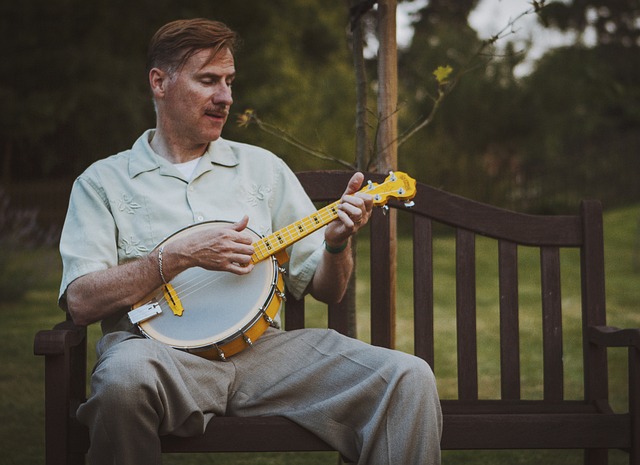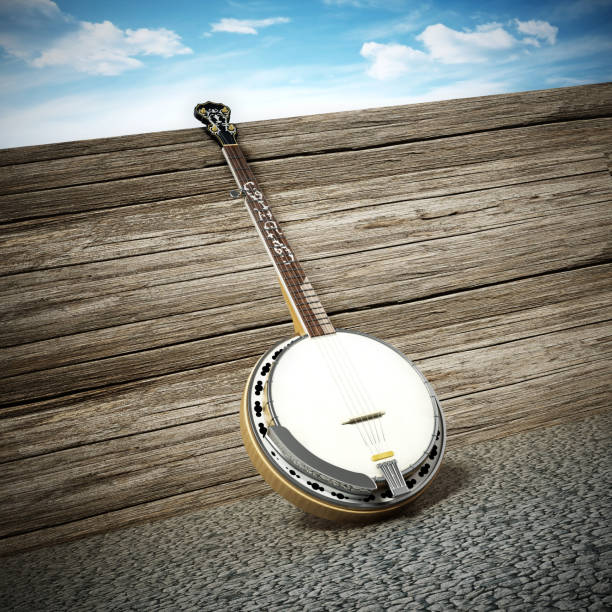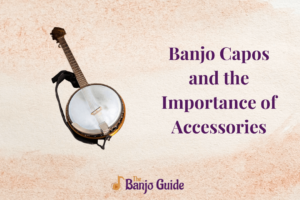Caring for your banjo is similar to how you clean other stringed instruments. The procedure gets quick and easy as you develop a habit of doing it.
With the right banjo maintenance accessories and tips, you can keep your banjo playing and sounding great.
In this article, we will share some vital information for banjo players. From the must-have banjo maintenance tools to the importance of quality tuning, here is everything you need to know to care for your banjo just right!
Must-Have Banjo Maintenance Tools: What Every Banjo Player Needs
The top accessories to protect tenor banjos that every player needs are:
- Head Wrenches And Torque Wrenches: If you are looking for precise tension tuning of the banjo heads, investing in head wrenches and torque wrenches tools is necessary. You can use this tool to balance the head tension. It will do so by equalizing the amount of torque.
- Tightening Brackets: If you wish to tighten the head of your banjo, then you should invest in tightening brackets. Whatever tightness level you prefer, bracket lugs need to be kept snug. This will ensure that the tension on the banjo head remains the same.
- Replacement Heads: Banjo heads wear out with time. Even if there isn’t a hole in the head, the urgency to replace banjo heads should be addressed. So, investing in a new banjo head certainly makes a must-have maintenance tool.
- Drum Dial: A drum dial is one of the most accessible and accurate tools. This tool is used for making tension adjustments in the banjo heads. Drum dials can help in maintaining a relative pitch. It creates the snapping and poppy sound of the banjo.
Cleaning Your Banjo: Tips and Tricks to Keep Your Instrument Looking and Sounding Great
The best tips and tricks for cleaning your banjo are as follows:
- Cleaning Your Hardware: You can invest in care clothes for your banjo. There are three types of care clothes for banjo available in the market. Each care cloth has a separate function:
- Pink Cloth: Pink cloth is better known as wax cloth. It is made using a special polish that is safe for your banjo. The protective polish keeps the fingerboard, neck, and other parts clean. It is essential for properly cleaning tenor banjo strings and fretboard.
- Grey Or White Combo: Daily maintenance requires a Grey or white cloth. If you want to buy only one care cloth, then buy this one. The white portion consists of an anti-tarnish substance that prevents premature tarnishing of banjo hardware. The grey portion of the fabric can be used for retarding the tarnishing process.
- White Cloth: The white cloth is meant for banjo hardware showing tarnish signs. This cloth is safe. It removes tarnish effectively.
- Cleaning The Banjo Head: Oil, dirt, and moisture can dirty the banjo heads. The signs of such dirt accumulation can be unsightly. You can use a white paper towel to remove grease on the banjo heads. You can also use clear cleaner used on kitchen counters to remove fingerprints. Put it on a cloth, then rub it gently. Don’t spray!
- Taking Care Of The Fingerboard:
- Cleaning The Fingerboard: You can use a clean cloth to clean the fingerboard. You can pour a light coating of almond oil on the fabric. Rub this cloth on the wood. Wipe down again to remove excess oil.
- Keeping Fingernails Short: Keeping your fingernails short is another way to care for your banjo’s fingerboard. Although the wood is dense, long hours of practice with long fingernails might have long-term effects.
- Using A Lighter Touch On The Grooves: If you notice grooves on your fret, that might signal that you are pressing harder than necessary on the banjo frets. It would help to practice using a lighter touch on the grooves to prevent further damage.
- Finishing: Taking precautions to protect the banjo finish is better than paying for damage repair.
- Washing Your Hands: Always wash your hands before playing the banjo. Avoid interacting with the banjo finish if you have lotion, perfume, aftershave, or oil on your hands. This step will help in increasing the lifetime of your banjo finishing.
- Avoiding Plastic & Vinyl Straps: Avoid any plastic or vinyl straps contacting the banjo finish. You should invest in durable banjo straps like leather straps custom-made to fit your banjo.
- Avoiding Commercial Furniture Polish: Commercial furniture polishes contain harsh silicon and chemicals. These chemicals can interact with the finish. You can use the pink care cloth to get rid of this polish.
- Very Light Scratches: Some light scratches on the finishing can always be dealt with. You can use toothpaste or light-grade auto polish on a cotton cloth. You can rub the cloth around the grit of the polish to smoothen the finish.
- Tightening The Head: The banjo head is made of plastic. It does not scratch. If you want your banjo to sound bright, tightening the head will be a good decision. It will help in keeping the head tension of the banjo firm.
- Changing The Strings: Strings often lose their elasticity. They lose their tarnish over time. But strings are comparatively inexpensive to replace. If you play often, you should replace your banjo strings every 4 to 6 weeks. It would help if you learned how to replace the strings of your banjo yourself. It will save you a lot of hassle.
Protecting Your Banjo: Cases, Covers, and Other Accessories to Keep Your Instrument Safe
Some of the best banjo accessories to protect your banjo are:
- Banjo Hardshell Cases: A banjo Hardshell case is the best accessory to protect your banjo. The case can protect your banjo from a wide range of damages. It is made with Hardshell material that covers the banjo from bumps and scratches. The case’s interior is made with plush velvet to keep it secure. The exterior of the case looks modern and stylish.
- Banjo Gig Bag: A banjo gig bag is another excellent option for players. The bag is made with heavy-duty fabric like nylon. The bag features extra padding to offer protection. It comes with an adjustable foldable strap, a comfortable handle, and an adjustable shoulder strap.
Maintaining Your Banjo Head: How to Keep Your Banjo’s Sound Quality Consistent
The best tips and tricks for the maintenance of your banjo are as follows:
- Tighten Your Banjo Head: Does the tone of your banjo not sound right? Do you notice some buzz when you certain frets? Then, you should tighten your banjo head. A tighter head will produce a crisper and brighter sound. Aim for the G# pitch for the best sound.
- Putting The Banjo Bridge In The Right Place: A banjo bridge is also called a floating bridge. It is not fixed in one place. If you took out all the strings, then it would fall off. Move the bridge closer to the neck if the fretted note is flat. Move the bridge closer toward the tailpiece if the fretted note is sharper.
- Changing Your Banjo Strings: Changing your strings is easy and necessary. It helps to bring back the life of the banjo. If you notice any signs of dirt buildup or corrosion, then it is a sign that you must change them. The life of the strings depends on how much and how you play.
- Adjusting The Coordinator Rods: While some banjos have wooden dowel sticks, many also come with coordinator rods. Adjusting the coordinator rods will bring the action of your banjo down.
- Adjusting The Tailpiece: A good banjo tailpiece is fully adjustable. The angle of a tailpiece is adjusted through the screw on its back. A tailpiece adjusted close to the banjo head produces a crisp and bright sound. A tailpiece adjusted away from the banjo head does the opposite.
- Adjusting The Truss Rods: Most banjos do not have truss rods. A banjo that has truss rods helps in adjusting action in another way. You can adjust action via the coordinator rods. But if you cannot adjust the way you want with the coordinator rods, that’s when truss rods lower the hassle.
- Tightening The Tuning Buttons: The screws that hold the tuning buttons often lose up. This can promote the slipping of tuning pegs. It can result in the banjo not holding up the tune. Taking a screwdriver to tighten the screws can get the job done.
- Sagging Bridge: If you find out that your banjo’s bridge is sagging, you will need a new one. A sagging bridge makes it hard to play the strings. In such a scenario, the strings keep dipping down, preventing seamless playability.
- Changing Your Banjo Head: Banjo heads can wear out with time. The head wears off faster if you use a flat pick on your banjo. The constant heading on the head can wear a hole in the head. Over time, the head also loses its elasticity. The tone will not jump as it should. Changing your banjo head can serve as a good remedy for this.
Tuning Your Banjo: The Importance of a Quality Tuner and How to Use It
- Check The Pitch Of Each String: You can use a clip-on tuner for tuning tenor banjos for optimal sound quality. If your banjo is not properly tuned, you will make it outright with its sound. An untuned banjo can be difficult to listen to and challenging to sing with. You can also use a free banjo tuner application on your smartphone to get the job done.
- Tighten If Flat Or Loosen If Sharp: If a string is flat or lower than the intended pitch, then tightening the tuning peg will raise the pitch. If a string is sharp or higher than the intended pitch, then you can lower the pitch by loosening up the tuning peg. You should always loosen up the string and then tighten it up.
- Tune & Adjust Each String: Tuning and adjustment of each string of the banjo are equally important. You must repeat the tuning process every time you play. It will help you a lot in maintaining a consistent pitch of your banjo. Other strings might adjust to tension and change pitch as you continue tuning.
Conclusion:
Caring for your banjo is no longer a hassle. Investing money in smart and quality tenor banjo maintenance accessories is a good decision.
With the best maintenance tools for fingerstyle tenor banjo playing and the best tips and tricks to maintain your banjo, we are sure your banjo will always stay in good form.
Other things like tuning your banjo with a quality tuner, maintaining the quality sound of your banjo by maintaining your banjo head, and protecting your banjo with the right kind of accessories are one of the best ways to enhance the performance and productiveness of your banjo.
FAQs
-
How often should I clean my banjo?
Cleaning your banjo daily is necessary to maintain your banjo. It is wise to remove the nut or capo on the banjo. The continuous pressure of such banjo accessories can damage the finish of your banjo.
-
How to protect your banjo when you are traveling?
When you are traveling, you can protect your banjo by keeping it in a case. You can maintain the humidity inside the case by putting it in a case humidifier. You should consider placing your banjo inside a blanket to protect it from the sun.





